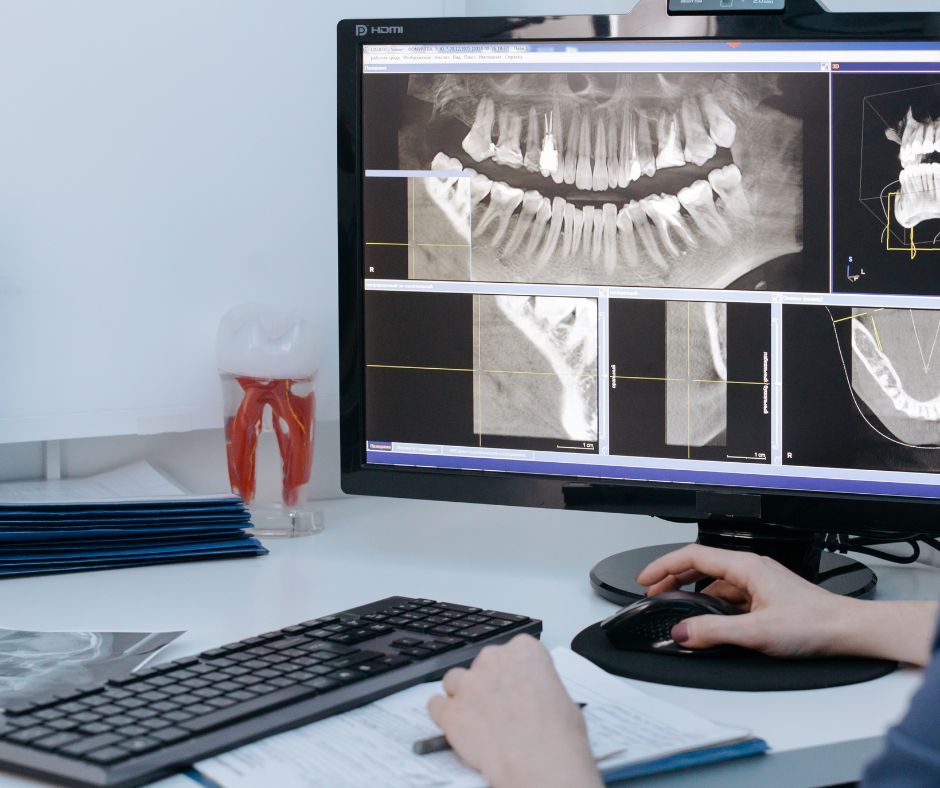Blog Page & News Articles
Patients Guide to Dental X-Rays
Author: Dr Behnam Aminnejad. Posted: 09.11.25
The Importance of Dental X-Rays: A Window to Your Dental Health
When it comes to maintaining good oral health, regular dental check-ups play a vital role. Among the array of diagnostic tools dentists use, dental X-rays stand out as an essential tool for comprehensive assessment and treatment planning. Despite concerns about radiation exposure, modern dental X-ray technology offers numerous benefits that outweigh the minimal risks. Let's delve into why dental X-rays are crucial for your dental care.
Understanding Dental X-Rays
Dental X-rays, also known as radiographs, are images of your teeth, bones, and surrounding tissues. They provide valuable insights that are not visible during a regular dental examination. These images help dentists detect hidden dental issues such as cavities, bone loss, impacted teeth, and infections.
Types of Dental X-Rays
There are several types of dental X-rays, each serving a specific purpose:
- Bitewing X-Rays: These X-rays show the upper and lower back teeth's biting surfaces and help detect decay between teeth.
- Periapical X-Rays: These capture the entire tooth, from crown to root, and are useful for detecting dental abnormalities like infections and bone loss.
- Panoramic X-Rays: Offering a comprehensive view of the entire mouth, including the jawbone and sinuses, panoramic X-rays are beneficial for assessing wisdom teeth, jaw disorders, and overall oral health.
- Orthodontic X-Rays: These X-rays aid in orthodontic treatment planning by providing detailed images of the teeth and jaws.
The Procedure: How the Dental X-Rays are Taken
It's not much more than simply having a photo taken. You will be asked to sit or stand upright in the dental chair. Depending on the type of X-ray being taken, the dental assistant may place a small, flat plastic device called a sensor or film holder inside your mouth. This sensor or film captures the X-ray images. The X-ray machine will be positioned so that it is aimed at the specific area of your mouth where the X-ray images are needed. Once you are properly positioned and the X-ray machine is in place, the dental professional will step out of the room to activate the machine. The X-ray machine will emit a small burst of radiation, which will pass through your mouth and onto the sensor or film, creating an image of your teeth, gums, and jawbone. The dental professional will assess and discuss the findings with you there and then. Finally, the X-ray images will be documented in your dental records for future reference. They will serve as a valuable tool for tracking changes in your oral health over time and guiding your ongoing dental care.
The Benefits of Dental X-Rays
- Early Detection of Dental Problems: Dental X-rays enable dentists to identify issues in their early stages when they're easier and less expensive to treat. This proactive approach helps prevent dental problems from progressing into more significant issues.
- Precise Treatment Planning: By providing detailed images of the teeth and surrounding structures, X-rays help dentists develop precise treatment plans tailored to each patient's unique needs. This ensures optimal outcomes and patient satisfaction.
- Monitoring Oral Health: For patients with a history of dental issues or undergoing specific treatments like orthodontics, regular X-rays allow dentists to monitor progress and make necessary adjustments along the way.
- Educating Patients: Dental X-rays empower patients to understand their oral health better. Dentists can use these images to visually explain conditions, treatment options, and potential consequences, enabling patients to make informed decisions about their dental care.
Safety Considerations
While dental X-rays involve exposure to a small amount of radiation, modern equipment and techniques minimize this risk significantly. Dentists take precautions to shield patients from unnecessary exposure. Moreover, the benefits of early detection and accurate diagnosis far outweigh the minimal risks associated with dental X-rays.
Conclusion
Dental X-rays are indispensable tools in modern dentistry, providing valuable insights that enhance diagnosis, treatment planning, and patient education. By enabling dentists to detect dental problems early and develop precise treatment plans, X-rays contribute to better oral health outcomes and overall well-being. Embracing dental X-rays as part of routine dental care empowers patients to take control of their oral health and enjoy a lifetime of healthy smiles.
Read more of Dr Behnam Aminnejad's dental care articles and tips: Back to Blog

Why Choose Us?
- Master's degree in Endodontic (Root canal treatment)
- Almost 30 years experience
- All dental treatments are individually tailored to your specific needs
